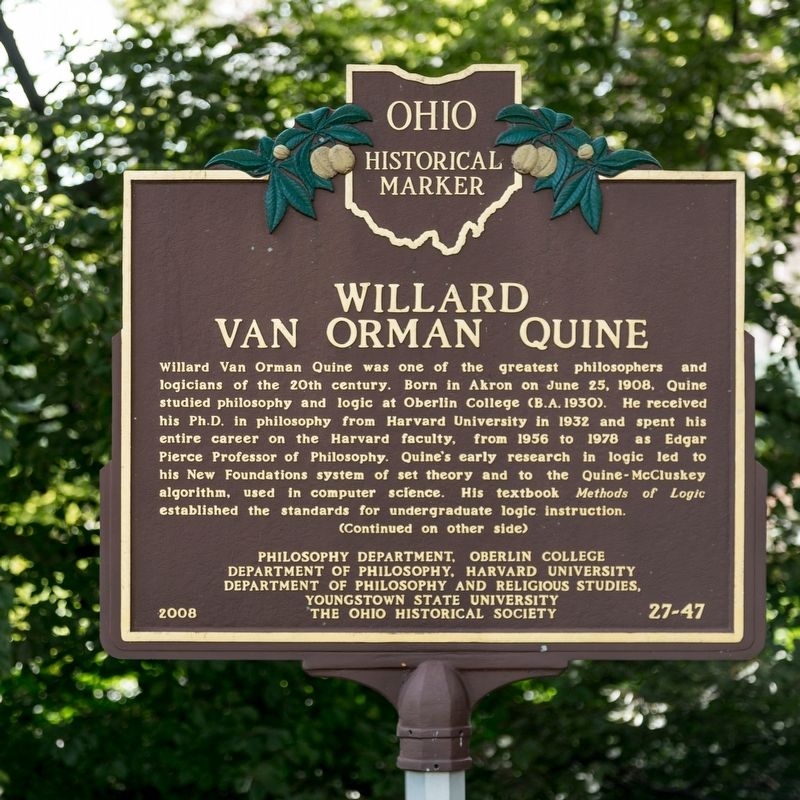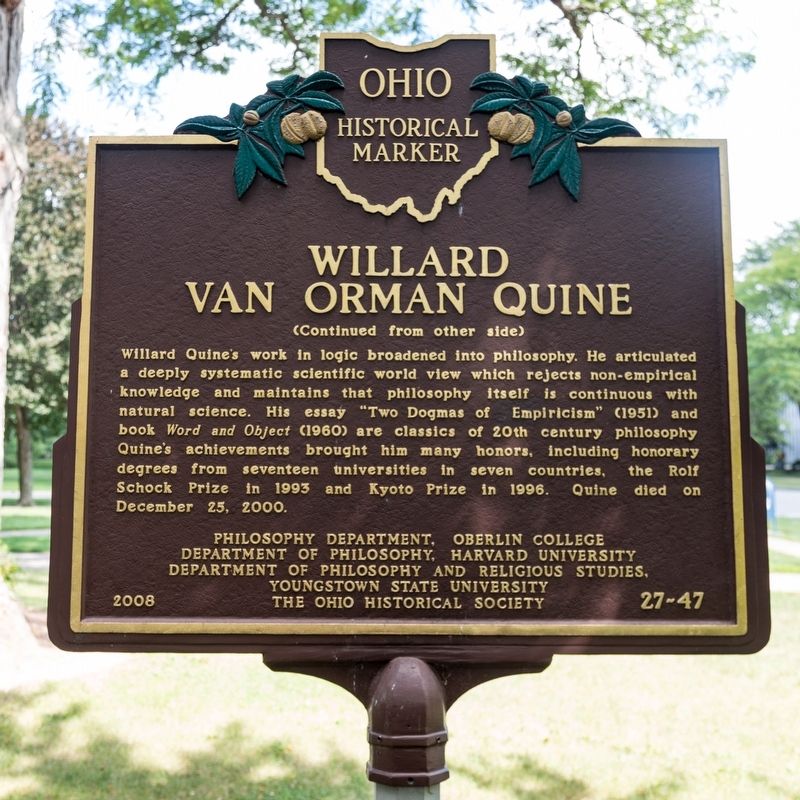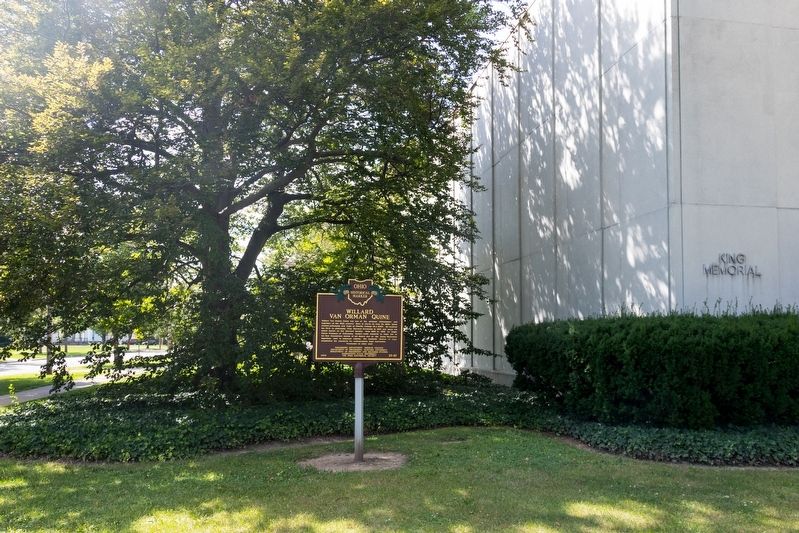Oberlin in Lorain County, Ohio — The American Midwest (Great Lakes)
Willard Van Orman Quine
Willard Quine’s work in logic broadened into philosophy. He articulated a deeply systematic scientific world view which rejects non-empirical knowledge and maintains that philosophy itself is continuous with natural science. His essay “Two Dogmas of Empiricism” (1951) and book Word and Object (1960) are classics of 20th century philosophy. Quine’s achievements brought him many honors, including honorary degrees from seventeen universities in seven countries. the Rolf Schock Prize in 1993 and Kyoto Prize in 1996. Quine died on December 25, 2000.
Erected 2008 by the Philosophy Department, Oberlin College; Department of Philosophy, Harvard University; Department of Philosophy and Religious Studies, Youngstown State University; and The Ohio Historical Society. (Marker Number 27-47.)
Topics and series. This historical marker is listed in this topic list: Science & Medicine. In addition, it is included in the Ohio Historical Society / The Ohio History Connection series list. A significant historical date for this entry is June 25, 1908.
Location. 41° 17.514′ N, 82° 13.231′ W. Marker is in Oberlin, Ohio, in Lorain County. Marker is at the intersection of West College Street and North Professor Street, on the right when traveling west on West College Street. It is at the corner of the King Building. Touch for map. Marker is at or near this postal address: 10 N Professor St, Oberlin OH 44074, United States of America. Touch for directions.
Other nearby markers. At least 8 other markers are within walking distance of this marker. Charles M. Hall and Frank M. Jewett (approx. 0.2 miles away); Downtown Oberlin Historic District (approx. 0.2 miles away); Welcome to Oberlin Heritage Center (approx. 0.2 miles away); Oberlin College and Community / Abolitionism in Oberlin (approx. 0.2 miles away); Oberlin and the Underground Railroad (approx. ¼ mile away); Antoinette Brown Blackwell and First Church in Oberlin (approx. ¼ mile away); Westwood Cemetery (approx. 0.7 miles away); The Burrell-King House (approx. ¾ mile away). Touch for a list and map of all markers in Oberlin.
More about this marker. The marker is at the King building, which houses academic and faculty offices of the departments of anthropology, Classics, computer science, East Asian studies, rhetoric and composition, mathematics, philosophy, and sociology.
Also see . . . Wikipedia entry for the Quine–McCluskey algorithm. Excerpt:
The Quine–McCluskey algorithm (or the method of prime implicants) is a method used for minimization of Boolean functions that was developed by Willard V. Quine and extended by Edward J. McCluskey. It is functionally identical to Karnaugh mapping, but the tabular form makes it more efficient for use in computer algorithms, and it also gives a deterministic way to check that the minimal form of a Boolean function has been reached. It is sometimes referred to as the tabulation method.(Submitted on January 6, 2020.)
Credits. This page was last revised on January 6, 2020. It was originally submitted on January 6, 2020, by J. J. Prats of Powell, Ohio. This page has been viewed 327 times since then and 18 times this year. Photos: 1, 2, 3. submitted on January 6, 2020, by J. J. Prats of Powell, Ohio.


